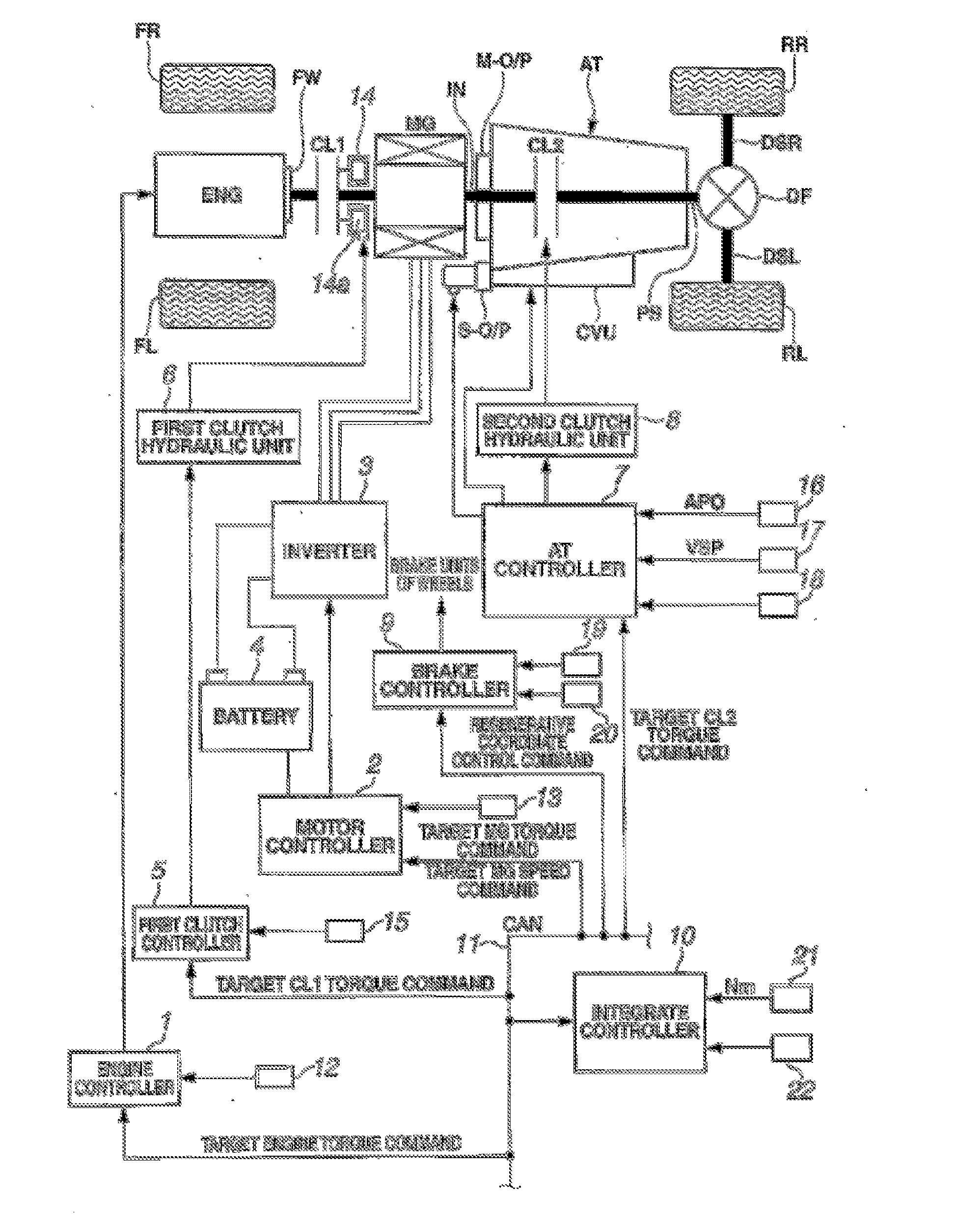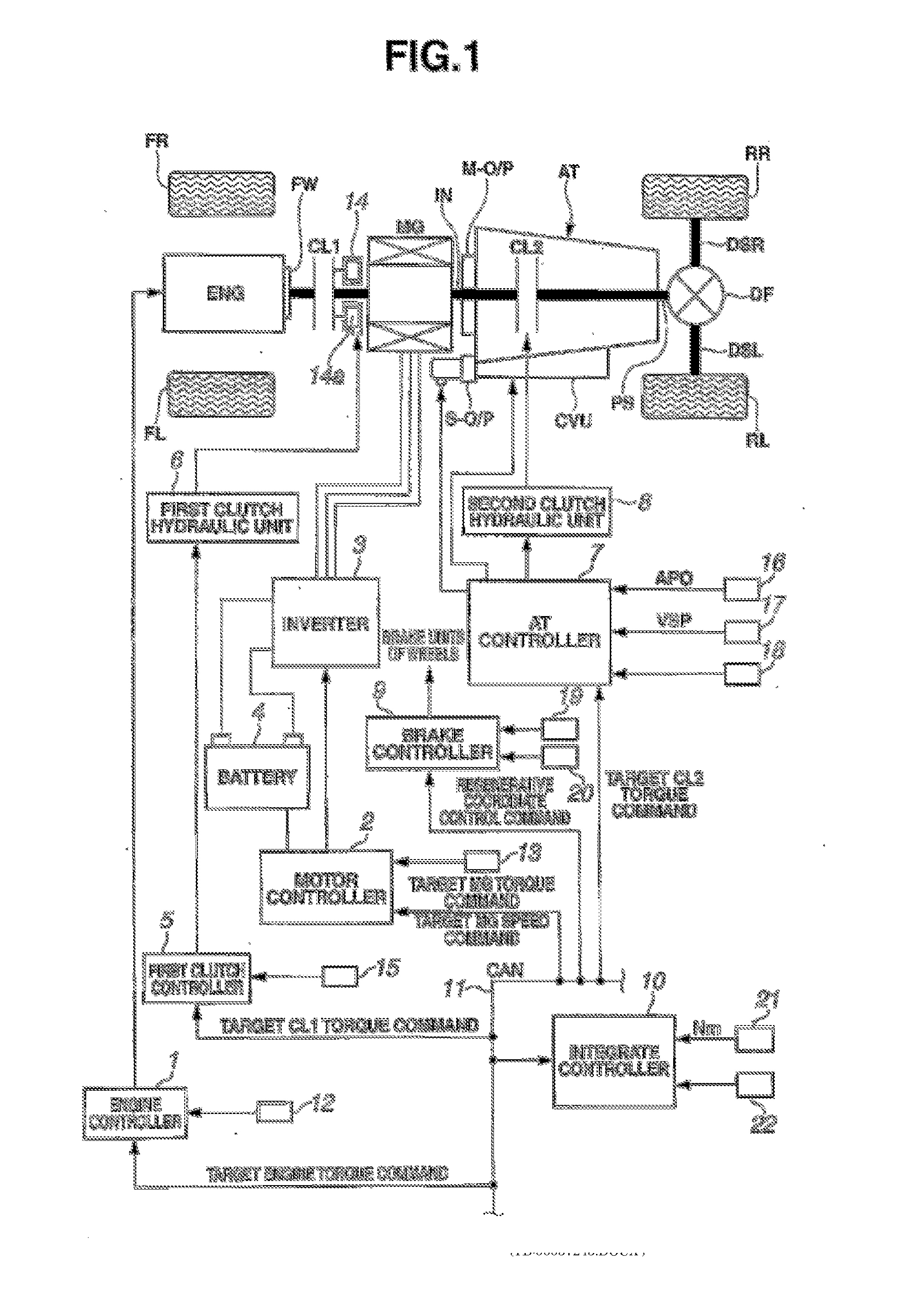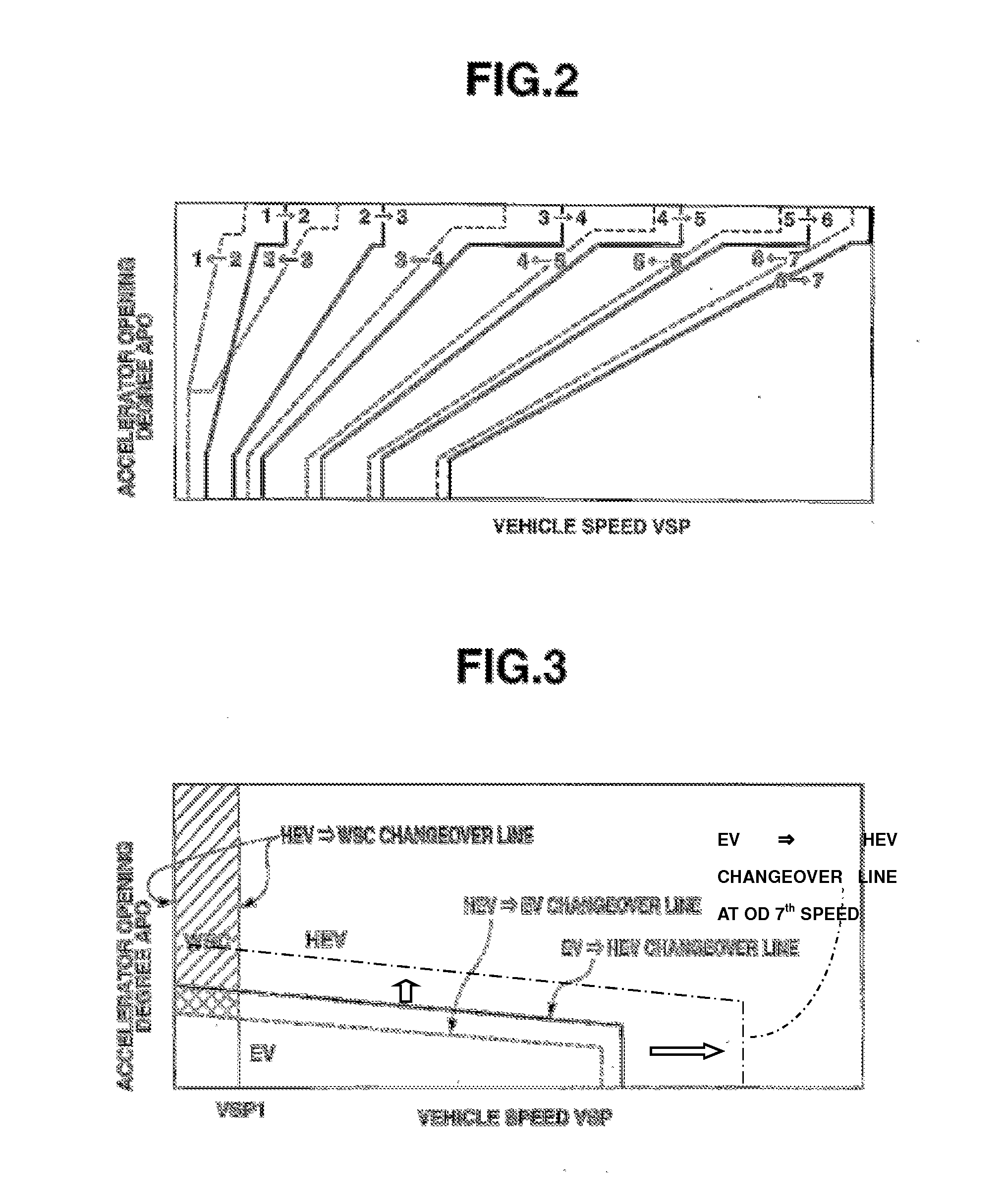Hybrid-vehicle control device
a control device and hybrid technology, applied in the direction of machines/engines, automatic control systems, process and machine control, etc., can solve the problems of increasing the required drive torque and the inability so as to increase the motor torque limit and reduce the transmission ratio , the effect of increasing the motor torque limi
- Summary
- Abstract
- Description
- Claims
- Application Information
AI Technical Summary
Benefits of technology
Problems solved by technology
Method used
Image
Examples
Embodiment Construction
[0023]In the following, an explanation is made of the best embodiment for implementing the control device of hybrid vehicle according to the present invention with reference to a first embodiment shown in the drawings.
[0024]FIG. 1 is an overall system diagram showing a vehicle with a rear wheel-drive FR hybrid vehicle (an example of the hybrid vehicle) to which is applied a control device according to the present invention.
[0025]The driveline of the FR hybrid vehicle in the first embodiment includes, as shown in FIG. 1, an engine Eng, a flywheel FW, a first clutch CL1 (mode switching means), a motor / generator MG (motor), a second clutch CL2, an automatic transmission (transmission) AT, a transmission input shaft IN, a mechanical oil pump M-O / P, a sub-oil pump S-O / P, a differential DF, a left driving shaft DSL, right drive shaft DSR, a left rear wheel RL (drive wheel), and right rear wheel (drive wheel). Incidentally, FL is the left front wheel, FR is the right front wheel.
[0026]The ...
PUM
 Login to View More
Login to View More Abstract
Description
Claims
Application Information
 Login to View More
Login to View More - R&D
- Intellectual Property
- Life Sciences
- Materials
- Tech Scout
- Unparalleled Data Quality
- Higher Quality Content
- 60% Fewer Hallucinations
Browse by: Latest US Patents, China's latest patents, Technical Efficacy Thesaurus, Application Domain, Technology Topic, Popular Technical Reports.
© 2025 PatSnap. All rights reserved.Legal|Privacy policy|Modern Slavery Act Transparency Statement|Sitemap|About US| Contact US: help@patsnap.com



